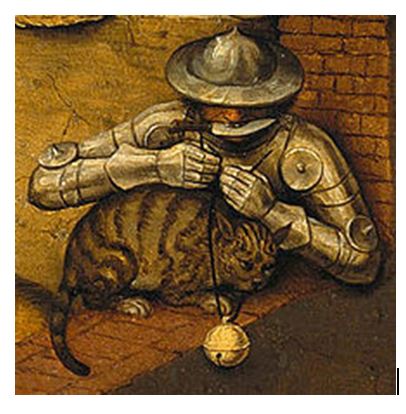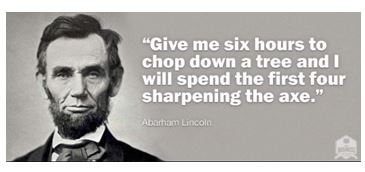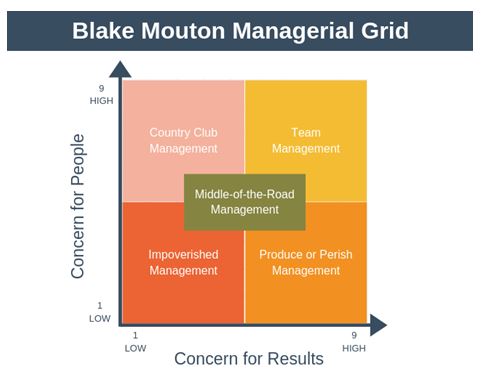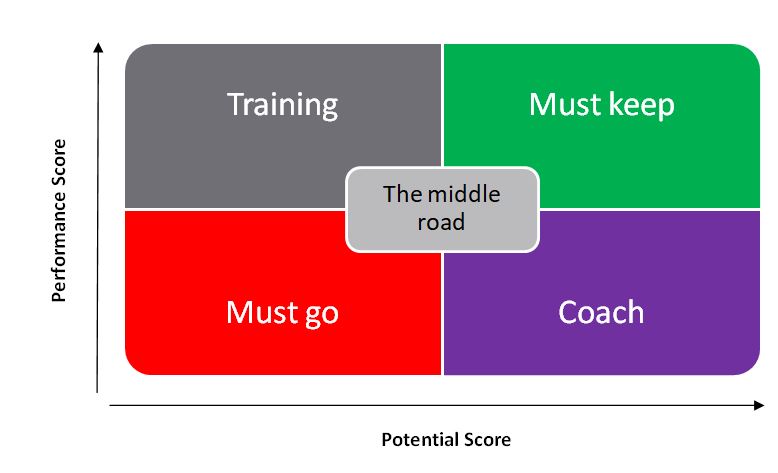Who will bell the Cat?

A Concept Paper on
Creating Organizational Agility
27.6.2020
Muraleedharan Nair
Principal Consultant,TransCat People Solutions Pvt. Ltd.

Table of Contents
PREFACE
ANSWERING YOUR PEOPLE QUESTIONS
THE NEED
UNDERSTANDING COMPETENCIES
COST EFFECTIVENESS
THE TECHNOLOGY PERSPECTIVE
THE MODERN ASSESSMENT AND DEVELOPMENT CENTERS
HOW CAN A STRATEGIC CONSULTING ORGANIZATION HELP?
THE WAY FORWARD
Preface
You just opened this document and ready to read. Most probably, you are sitting in the comfort of your Study room at your home. Six months ago, you would probably have been in a client location forming your strategy to beat that competition and get that precious deal. Or, you may have been in your office conference room, brainstorming your business strategy and fixing the accountabilities with your team. Maybe, you would have been on a much delayed vacation with your family in a resort. Had it been those happy times, you would have, in all possibilities, just read the subject line of the e-mail or the title of this document and forwarded this to your line manager to explore if this is of any use to you.
Sure, the times have changed. You may have never believed in a VUCA World; possibly thought that the human race has always lived in the VUCA World. But today, when you wake up, your mind is full of questions for which there are no easy answers: As an entrepreneur, or business owner, do I look for safety? How is my business going to survive? Can I find a method to this madness and create an environment that will provide for stability and continuity? Or do I plunge into the unknown waters and say this shall also pass and aim for growth? These are not easy questions; rather they are troubling, and of course, there are no easy answers either.
Well, let us put it in perspective. When a soldier has nothing or nobody to fight, what is the best thing he can do? If you nailed it, yes, he will sharpen his sword. In the case of business, the sword is your people organization.
Surely, the very way in which business operated six months ago is null and void. You need to find newer ways of managing your production or service delivery process. In all likelihood, your customers who patronised you in the past have either lost their purchase power or have ceased to exist. Therefore, you may have to see how you can attract and acquire new clients. Whether it is an existing client who has, in some way or the other, rejuvenated his own business, or it is an all together new client whom you have just acquired, the client expectations would invariably be vastly different. You will see that the renewed or new contract has clauses that you have never even imagined in the past, technical or commercial.
While all these are challenges that need to be addressed, the most pertinent question, is, who are those that are your “go-to men” who will sail this boat in the rough seas? The past never challenged you to make a scientific assessment of your people in terms of their potential and the competencies which form the base of your organizational pyramid. And unfortunately, without that solid foundation, it will not be a pyramid anymore.
This document attempts to put in focus the need and the way forward in creating an agile organization with a strong base. As we go along, it will be pertinent to remember that the people make or break an organization. This document endeavours to see the horizon from a CEO’s binoculars, not essentially from a functional mirror.
Answering your People Questions
Now that we have reached this state of discussion, let us attempt to compile some of the pertinent questions that maybe running through the mind of a CEO.
First and foremost, do I have the right people in the right place? Have I placed people who were available to me in positions which I consider critical? Or, have I selected people looking at the needs of the critical roles? In short, this is to ask oneself whether my people are leading those functions or are they being led?
Since a CEO is accountable to safeguard and improvise the lives of the people, their families and the society at large, it is needed of him to generate a sustainable profitability. From a people perspective therefore, the salient question is whether I am oversized, under sized or right sized?
a). If the organization is over sized, am I compromising the interest of the larger population for the sake of a few? There are possibilities that in the New World Order, you will be required to make investment in technologies to reduce your overheads. Therefore, when you reopen your Operations in full swing, you will find that the new normal will demand you to right size your organization.

b). If you are under sized and in all likelihood you will be, the situation will be different. It is quite possible that a part of your workforce would have returned back to their home location and may not intend to come back. You may call them migrant workers or guest workers or interstate workers, but this is going to be a reality. If that situation arises, naturally you will need to go on a hiring spree, but it will have to be balanced with “The right person for the right job” and the size that is required in line with your plans for investment in technology to offset your overhead cost.
The answers are not easy. The right sizing will be a painful experience given the value system that you have followed for so long. Also, you will have to do the scissoring where it hurts you the least. A general chopping will prove more disastrous than not chopping at all. If you are going on a staffing spree, you certainly want to ensure that your future selection systems are scientific enough to be able to “predict” the performance.
How do we address this? Limitations of the science, as you may want to call it; the only way available is to run a scientific assessment and development centerbased on a clearly defined competency framework and be able to map this data to the past performance of the people, by creating a 9/9 analysis (Blake and Mouton, 1961).
If we were to extrapolate this concept, we will get a potential to performance mapping as shown below:

If you can arrive at such a scientific understanding of your people organization, your job has become simpler and you will not miss the woods for the trees.
The Need
Your needs are unique to your organization and they must be studied, deep and broad, to devise a tailor made system for you. However, from experience, one could find a common pattern of these needs. At the cost of repetition, the primary concern of any CEO would remain that whether those whom I have dearly held to my heart as the ones to look up in a crisis are the ones for the future or not. Therefore, the supplementary needs maybe all or a combination of the below:
• The objectivity and fairness of the assessment or development center
• Human beings being what they are, there is a natural need to ensure that assessor bias does not creep into the process
• The need to have a competency framework that is tailor-made to my organization and which, my team and I believe, are the pointers to delivering superior job performance
• The tools that will be used in the assessment process need to be aligned to such a competency framework
Understanding Competencies
This takes us to the next logical question: What are Competencies? It is unfortunate that the term competencies has been more often than not misunderstood and therefore, misused. It is but natural that people will tell you that it is a set of knowledge, while some others tell you that competencies consist of a series of skill sets. There cannot be a more erroneous definition for competency. To gain clarity, let us take an example: Imagine that you are a manufacturer of steel products, say TMT bars, millets and billets. On the production floor, you essentially need knowledge of metallurgy and mechanical engineering. You also need knowledge of PPC, quality management and supply chain. This forms the larger part of the knowledge base. What are the skills required – equipment maintenance, configuring and running the production equipment, waste disposal, judicial use of utilities such as electricity and water etc., are typical examples of the skills. Let us assume there is a genius in your production floor who has all the above knowledge and skill sets, but lacks the willingness to put this knowledge and skills to productive use. Ultimately, this person’s knowledge and skills is of no use to you, because it is not demonstrated by behaviour. Therefore competency must be understood as a cluster of knowledge, skills and behaviour, where the interplay is that the knowledge helps you to build the skill and the behaviour helps you to demonstrate that skill.
To cut the long story short, competencies are observable behaviours that help to deliver superior job performance.
Cost Effectiveness
Traditionally, assessment and development centers have depended heavily on the assessment being carried out in a physical location with both the assessors and assesses present. While this model is advantageous to the assessor, in as much as that he/she will be able to get a chance to observe the assesses in person, it can prove quite expensive, especially if you have multiple locations and a distributed organization. The only way to make the whole exercise economical and affordable is to resort to technology as much as possible.
The Technology Perspective
In most Indian organizations, unfortunately, computers are used as a modern version of the good old typewriter and some business applications such as accounting software or an ERP. The future of business operations, if at all it has to be sustained on a long term, will be far more technology intensive. The production floors will see automated movement of material, warehousing and a significant part of the labour work robotised. The decisions will be based on data and its analysis enabled by Artificial Intelligence and Machine Learning. Gone will be the days, when a set of your data entry operators punched data into the Excel sheet to create an analysis which would have lost its relevance by the time the data entry itself is over.
This is going to be true to assessment and development centers also. The paper pencil models will vanish. The assessors themselves will need to be competent enough to judge the behavioural characteristics on an online platform. The end question in the future will be, whether the investment a CEO signs off is producing an ROI or not, no matter whether that investment is in people, process, market, technology, infrastructure or anything else.
The Modern Assessment and Development Centers
Let us start with the fundamentals of applied human being. Human mind is like an iceberg. What you see and are able to observe, is just about 15-20% and the rest are hidden below the water. Therefore the modern assessment centers will have to use tools that can measure both the observed behaviour and the drivers of such behaviours. This means it will have to be a combination of psychometric assessments, coupled with observable behaviouralassessments.
Generally, availability of psychometric tools is not a problem, but the issue is in selecting the most appropriate tools for a given set of competencies. You may need to use, depending on the competencies, both cognitive and personality tools. As far as the observable behaviours are concerned, modern assessment centers will have to have the ability to use anything and everything from the “In-tray” whether we are talking of case studies, in-basket, role plays, group discussions, Bheavioural Event Interview (BEI)/ Competency Based Interview (CBI), experiential gains, using online technologies and creating a virtual world.
The primary objective of the development center is to help facilitate the self and team developmental needs of the high potential members and teams, which in turn helps to create a leadership pipeline. Similarly, the output of selection assessment centeris to create a scientific ranking of candidates which can help the organisation to take informed decisions not only in promotions, but also in job rotation and recruiting for key positions .These two will help you to invest your time and money in the right set of people, to increase the organizational agility.
Only such a comprehensive framework will be able to satisfy your needs emanating from the challenges that you have foreseen for your business. It is sad but true to say that otherwise your investment will end up being a fun event, forgotten the next day.
How can a Strategic Consulting Organisation help?
The strategic consulting organization like TransCatPeople Solutions Pvt. Ltd. has resources that have extensive experience in designing/ redesigning Competency Frameworkrelevant to your business needs, devising a tailor made assessment and development center and in delivering the same. We have access to morethan 50 Psychometric instruments, both cognitive as well as personality and values, from multiple research centers. We have certified psychologists who are also associated with the British Psychological Society. This is strengthened by a web based assessment backbone for technology enablement.
TransCat has a process framework which ensures minimal assessment bias through a combination of techniques involving assessment process, assessor distribution, usage of tools that can apply to multiple competencies and a method where a given competency is measured by multiple tools and multiple assessors. If there is a need, TransCat can also provide you with online 360 or 180 analysis as part of the assessment. The entire process is online including the participant feedback and creation of their individual and group developmental plans. A comprehensive learning calendar can be designed based on these inputs, to optimize the time and budget for continuous learning.This has the advantage of ease of operation as well as cost-effectiveness.
The Way Forward
TransCatPeople Solutions Pvt. Ltd. will be delighted to discuss this further with you in order to understand the challenges faced by your organization and to arrive at a suitable proposal that will meet your needs.
For further information, please contact:contact@transCat.in
TransCat People Solutions Private Limited
No. 16, 1 st Cross Street, B. K. Residency
Doddakkammanahalli Main Road, Begur Hobli
Off Bannerghatta Main Road, Bangalore - 560 076
Ph:+91 95902 02404
Email : contact@transcat.in
Web : https://transcat.in/